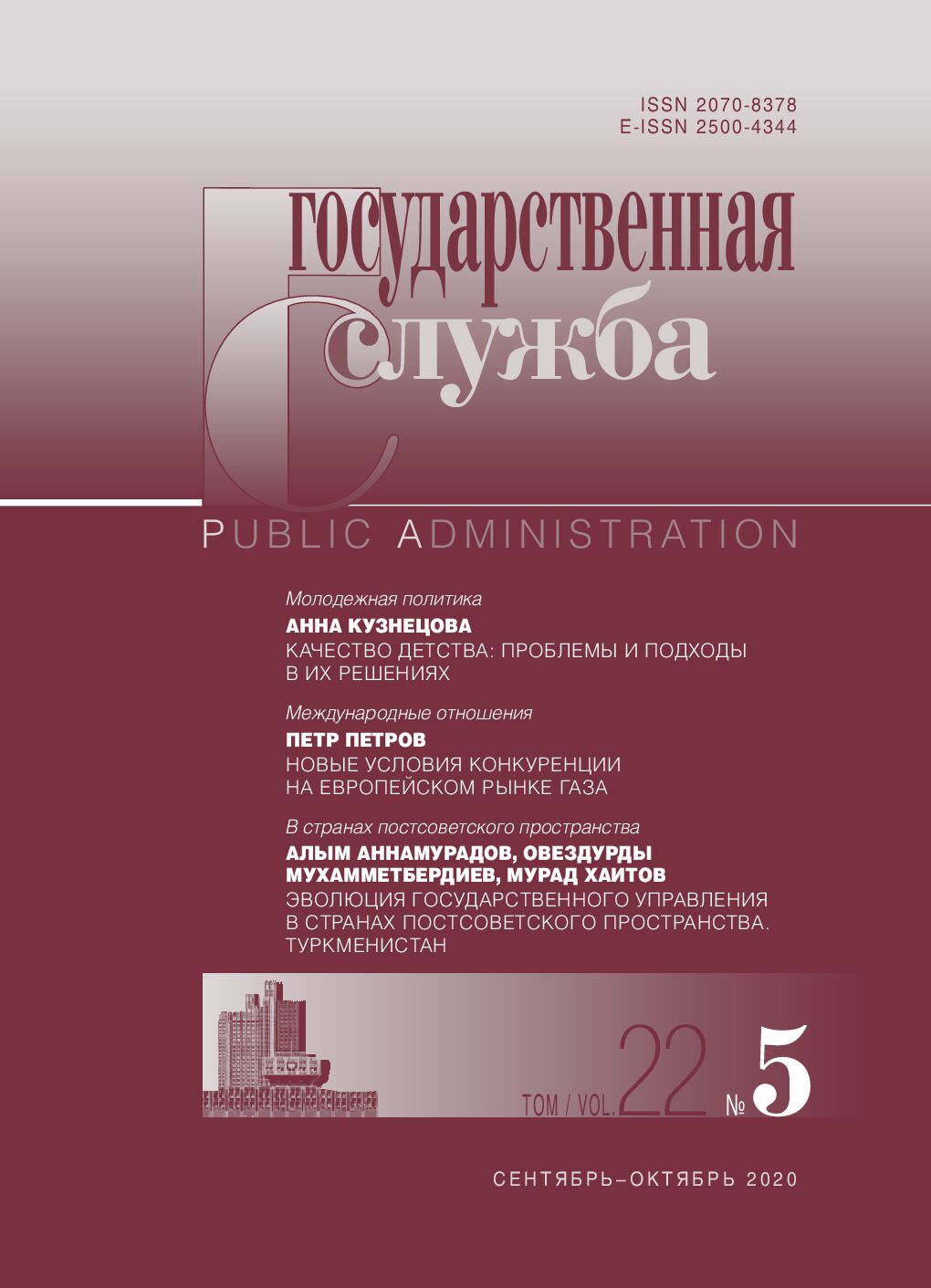Recommended link to article:
ANNA Yu. KUZNETSOVAа
аChildren’s Rights Commissioner under the President of the Russian Federation
DOI: 10.22394/2070-8378-2020-22-5-6-11
Abstract:
Childhood problems need to be studied to timely identify and resolve them at an early stage, with the interaction of both the state and society. The author gives a general description of the main approaches to assessing the quality of childhood. The author considers the world experience of comparative analysis of child well-being, which is reflected in the concept of social exclusion suggested by the United Nations Children’s Fund (UNICEF); it is based on parameters similar to the Child Well-being Index developed in 2004 by the United States Child Development Fund. We also examine the approach proposed by the World Health Organization to the specifics of the population’s quality of life. The essence of this approach relates to the individual’s perception of position in life in the context of the cultural environment and the value system in which this individual lives, considering his/her goals, expectations, standards, and views. The article mentions both the strengths and weaknesses of these approaches in the context of protecting the interests and rights of minors. It is noted that due to the lack of common criteria for understanding the well-being and quality of life of children, there is a variability in the proposed definitions, within which researchers mainly focus on two approaches: the first uses the category of «well-being», the second – the category of «quality». In public discourse, the category of «well-being» is mainly applied to families of certain type or to deviant behavior of adolescents. At the same time, terminological blurring and evaluative character are observed, which translate the discussion into a moral and ethical plane. The author sees the reason for this shift in the absence of legal definition for the «well-being of childhood.» The quality of life, and childhood in particular, can be determined through integrated approach that combines an objective assessment based on official data and a subjective one that reflects the opinion of the people themselves. Taking into account the existing practical experience in the protection of the rights and freedoms of minors, the author proposes her own multidimensional model of “Quality of childhood”. It is a system for structural assessment of state policy in the sphere of childhood to create conditions for the realization of rights and legitimate interests of minors in the Russian Federation, which also considers objective and subjective indicators in this sphere.
Keywords:
quality of childhood, quality of life, index of child well-being, index of children’s quality of life, state policy in the sphere of childhood, tool for assessing and adjusting family policy, The Children’s Rights Ombudsmen Institution
Received:
October 2, 2020
References:
Kislitsyna O. A. Measuring the quality of life/well-being: international experience. Moscow. Institute of Economics of RAS. 2016. In Russian
Kurshina M. V. Long-term consequences of perinatal pathology: the structure of disability and the quality of life for disabled children. Dissertation for the degree of Candidate of Medical Sciences. 01.14.08. Pediatrics. Samara. 2018. In Russian
Trofimova N. V. Integral estimate of population’s life quality. Vestnik RGTEU. 2010. No. 5. P. 156-163. In Russian
Modern theories of social well-being. Study guide. Compiled by Kalinina D. S., Yavon S. V. Togliatti. PVGUS Publishing house. 2018. In Russian
Tsinchenko G. M. Children’s well-being in the context of new social studies in Western countries. Vestnik PNIPU. Sotsial’no-ekonomicheskiye nauki. 2017. No. 1. P. 77-88. In Russian
UNICEF. Child poverty in perspective. An overview of the well-being of children in rich countries: Overview of the Innocenti Research Center. Vol. 7. Florence. UNICEF Innocenti Research Center. 2007. In English
Yarskaia-Smirnova E. R., Romanov P. V., Antonova V. K., Biryukova S. S. Well-being and ill-being in the conceptual apparatus of social policy in contemporary Russia. In: Family and Childhood Policy During Post-Socialism. Edited by Schmidt V., Iarskaya-Smirnova E., Chernova J. Moscow. OOO “Variant”. Center for Social Policy and Gender Studies. 2014. In Russian
Amerijckx G, Humblet P. C. Child Well‐Being: What Does It Mean? Children & Society. Vol. 28 (5). 2014. P. 404–415. In English
O’Hare W., Mather M., Dupuis G. Analyzing State Differences in Child Well-Being. Foundation for Child Development. New York. 2012. In English
Articles in Open Access mode are published under the Creative Commons Attribution 4.0 International (CC BY) license.

